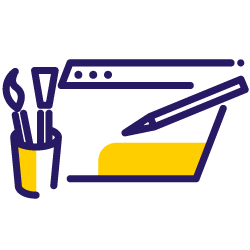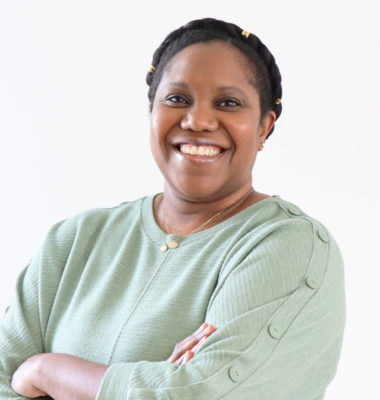We spoke with Roxana Stingu, Head of Search and SEO at Alamy, as part of our project to share what Oncrawl users are doing in SEO in their day-to-day jobs.
Watch the full interview or read on for the key moments below.
Roxana Stingu: from link building to technical SEO to image search
“I’ve been in SEO for 15 years. I started in a bit of a weird way. A lot of people kind of fall into SEO, but my first job was actually SEO related.”
Roxana began her career in SEO while still at university in Romania. The opportunity arose when she was approached by a friend offering a well-paid job where she could work from home. From that, Roxana started working as a link builder.
After three years of working U.S. hours from across the globe, she was eager to find a more traditional job and started working for a hosting company called WebFusion.
After a couple of acquisitions, a few promotions and with almost 10 years of experience under her belt, Roxana felt it was time to step out of her comfort zone and so transitioned from Technical SEO Manager at GoDaddy to Head of Search and SEO at Alamy.
The appeal of something entirely new

“After 10 years, my work and my position became very comfortable, so I wanted to find a job that was asking for things I’ve never done.”
Oncrawl: How did you make the transition from GoDaddy to Alamy?
Roxana: I knew the one thing I knew nothing about was image search, so I applied for that position. I initially thought my first interview would just serve as a test since I hadn’t done one in 10 years. However, during the interview, I found the company and the position so interesting. I wanted the job and they wanted me! So here I am at Alamy and I’ve been here for three years.
Oncrawl: Is there one thing in SEO in particular that you find more interesting?
Roxana: Yes, it is image search specifically. It’s very interesting, but it lacks the information you get with web search normally. With image search, you have a handful of people that are actually interested in image search and they constantly experiment to see how it works, because it’s not as documented as web search. We also lack a lot of data. You can get some image search data from GSC, but other than that, you don’t get any other information related to this type of search.
What intrigues me is that a lot of things come into play when you talk about image search because it also involves the information the actual image can provide. So, I’m very interested in using artificial intelligence to read what’s going on inside an image: what kind of information can we get that we don’t already have; how to use computer vision to name all the objects in the image or to create a better alt text for the images. There are so many possibilities.
The challenges of Enterprise SEO
When Roxana transitioned from GoDaddy to Alamy, not only did she start working on a completely different type of SEO with image search, but there was a difference in scale regarding website size. Enterprise SEO involves different levels of complexity and also presents different challenges.
Oncrawl: What does your day-to-day job consist of? Is there anything you do on a daily basis or is it constantly changing?
Roxana: I do whatever is needed I guess. SEO is the biggest part of my day. But as I’m also Head of Search, I’m also heading our internal search engine. That’s something I’ve only started working on since last summer, so I’m fairly new to it. When it comes to SEO, anything that’s needed, that’s what we jump on. Although I specialize as a technical SEO, I think my years of experience allow me to learn about anything, in any area of SEO by now.
Scalability and cost
Oncrawl: Can you tell us about what you are working on at the moment?
Roxana: Now specifically, we are trying to replatform our entire website. We are moving from our legacy, 20 year old platform to a JavaScript based one and this is taking quite a lot of time because the website I work with is massive! We have 291 million products to date and it keeps growing by around 150K everyday.
Even though moving a website is about templates and all of those products represent one template, it’s still a lot of work and there are a lot of changes to implement. We still need to allow Google the necessary time to process these changes. But, we also want to make sure, from an SEO point of view, that we maintain our performance or even improve it where we can.
Oncrawl: Would you say working with such a large site is the most challenging part of your job?
Roxana: Yes, it is that! It is the biggest challenge mostly because this is a website I will never get to fully crawl and nor do I need to in most cases. But sometimes, it’s good to be able to see how everything connects: like if you’re working on internal linking for example. This is something I’ll never be able to do because of the size of our website.
Also, such a large site comes with different costs. For instance, if I wanted to use computer vision to get extra information from the images we have, and I chose to use Google’s services for our entire collection, it would be so expensive! Budgets need to be bigger when it comes to a website this big, but there are always workarounds.
Automation
Oncrawl: We see that you have worked a lot with automation. What role do you think that has in an SEO strategy?
Roxana: First of all, I automate any daily processes like reporting because I’m lazy, but in a constructive way. If I can avoid doing repetitive work, I find a way to automate it so I never have to do it again. I think automation helps SEOs gain time and that time could be used for analysis.
So, instead of spending three hours building a report, you can spend half an hour analyzing it after it was automatically built. Ultimately, you can utilize your time more efficiently so as to gain more insight, or so you can learn more about things; it gives you more time to go into deeper analysis.
Using AI and Machine Learning
Roxana: Automation is also great when you work with large websites because you are past the point where you can do anything manually. You need to automate most processes. For example, we are looking to use machine learning to identify things in images that normally we would use real people to do. But, you can’t keep up the pace with all the images coming in, so machine learning is a way that we can automate QAing the quality of the products coming in.
When it comes to SEO, we are also looking at how we can use machine learning to create a knowledge graph that can then help us combine all this different information. If we tried to get that data manually, it would be impossible because of the sheer size of the website. Everything falls into automation, where we allow artificial intelligence to learn and come up with the insights when human intelligence is not enough. Not because we can’t, but because we need too many humans to be able to do it in the same amount of time.
Why SEO culture inside an organization is so beneficial
“As SEOs, we do all this work because we are trying to get somewhere. We are trying to get results. At Alamy, we’ve had massive growth in the past few years, but all this growth is not just SEO. You can’t achieve something like this unless you work with everyone in your company. This kind of SEO success is actually a business success.”
Oncrawl: What is the main SEO goal you have for your company right now?
Roxana: Alamy is a very ambitious company. We have this big plan to develop the business in the next three years. So I think my main goal from an SEO, but also an internal search engine point of view, is that we support that plan and do everything we can to get the whole business there.
One of the things that I really like about Alamy specifically is that SEO is ingrained in the business process. We have different ‘pods’ composed of people from different departments discussing our various business plans and SEO is always part of those discussions.
Finding your SEO community
Working in SEO can sometimes be challenging, intimidating and even frustrating. Having the right network of support to turn to when that happens to be the case can make all the difference.
Oncrawl: Is there any SEO advice you’d give to your younger self?
Roxana: If I had to say one thing, the biggest I think would be the need for community. For the better part of my career, I’ve been on my own, learning by myself, not really being able to reach out to industry experts to ask them anything. In the past few years, as I’ve started joining more communities, especially the Women in Tech SEO community, I have learned what it means to have this kind of community around you.
It’s not just about getting information, it’s not just for learning. It’s also uplifting and it helps boost confidence. For the longest time I thought the work I was doing wasn’t great, only to later find out that I was above norm. But I had no way of comparing my work with other people as a way to help boost my confidence and to encourage me to continue doing the work I was doing.
I think community is a great way of doing that as well as helping people who are new at SEO gain that confidence faster. Finding that community also means having people to go to as a fallback when they get stuck. So, instead of giving up when things don’t work, they can reach out to people who can offer mentorship and training or just simply some encouragement.
“I think it’s time we start understanding that there are more women in SEO than there used to be. I’m part of Women in Tech SEO and it’s 4,000 women in the field and there are still so many women on Twitter asking, ‘How did I not know this community existed?’. This is just the beginning.”
Oncrawl: Do you have any advice for new females entering the industry?
Roxana: Yes, learn! Find your community and learn. It can be daunting. I have beginners asking me, “Where do I start? How do I get to know what you know?”. And the answer is, 15 years. You don’t learn overnight, it takes a long time. I’m sure I could have learned way more in this time than I did, but I wouldn’t be able to understand the things I understand if I had not taken as much time to learn it all.
Takeaways from chatting with Roxana Stingu
Our conversation with Roxana taught us that even with 15 years of SEO experience, there is always something new to learn. When Roxana took on the role as Head of Search and SEO at Alamy, it was a personal challenge to not only learn about SEO specifically in regards to image search, but also to learn about how to manage an internal search engine. It’s a new area for her and she is leaning on the community of experts to learn. However, it’s important to remember that it takes time to learn.
Another key point that stood out was the fact that SEO can’t be accomplished alone or in a silo. An SEO success has to be a business success. The only way to achieve remarkable results is to work hand-in-hand with all internal stakeholders and make sure that SEO is integrated into everything the company does.
Not only does the work need to be accomplished as a team, but it’s also important for anyone working in SEO to find their community. With the right community, you have the right support you need to learn, grow and also encourage others.
We’d like to say thank you again to Roxana for taking the time to talk with us and for sharing her views on the day-to-day issues faced by SEOs everywhere.

